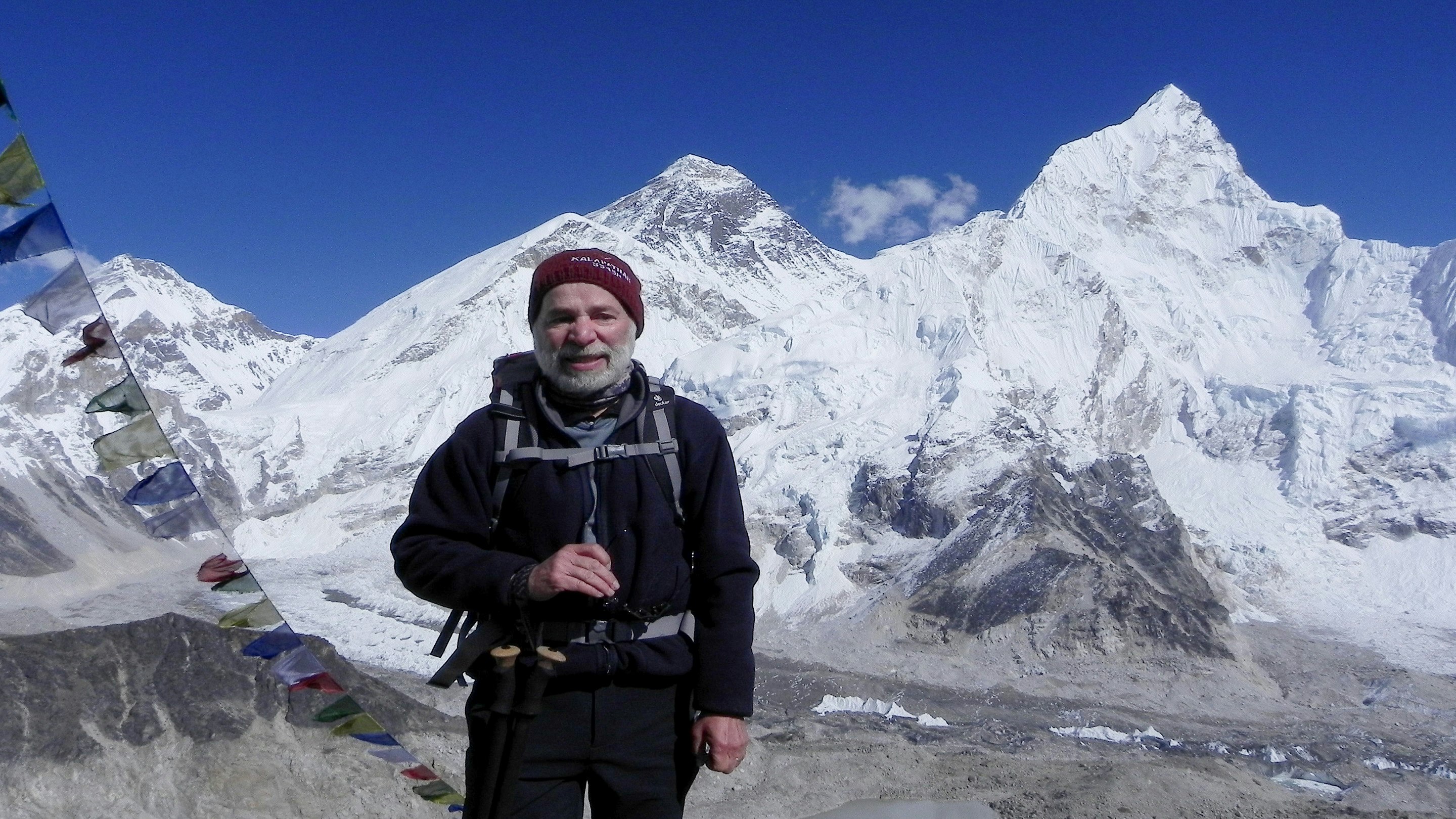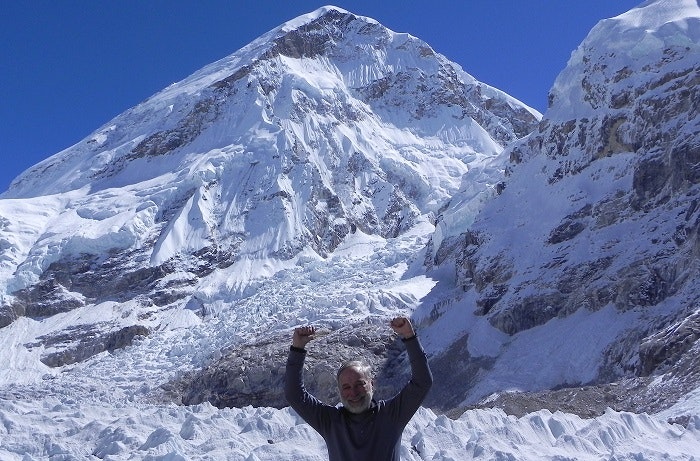Aloft in the Himalayas

I was in awe! Exhilaration pulsed through my veins. I had summited Kala Pathar, marveling at the majesty of Mt. Everest and the Himalayas. After traversing breathtaking valleys and astounding peaks, gaining affection for the Sherpa people and growing an appreciation of Buddhism, I had achieved one of my goals on the Everest Base Camp Trek.
Upon retirement, I had committed to months of intensive training for a trek through a region that had fascinated me for decades, Mt. Everest and Nepal. Our group of 5 trekkers, along with our Nepali leader, met in Kathmandu at the humorously named Yak and Yeti Hotel. The next morning, our adventure began as our twin prop plane came to a screeching halt at the end of an extremely short runway built uphill into a mountainside (to help the plane stop in time). We were in Lukla village (9,200 ft.), the starting point for Everest Base Camp treks. Our group navigated heavily terraced steep mountains, spectacular valleys, and verdant forests of fir and rhododendron. The trail at times was a hair-raising 1,500 feet above the raging Dudh Kosi (Milk River). We intrepidly crossed 5 long, swaying suspension bridges, waiting—with bated breath—until overburdened yaks completed their traverse.

Even though the trek was optimized for acclimatization by gaining altitude each day, I was concerned as to how I would adapt. Surprisingly, the two that did the best were the oldest; myself at 65 and a 66-year-old. Our adjustment to thin air was enhanced by day-hikes to higher elevations. The best of these was to the 15,100 ft. base camp of Ama Dablam (Mother’s Amulet), an astoundingly beautiful 22,300 ft. peak that captivated me.

Our 16-day trek covered 120 miles with our gear transported on a dzopkyo, a cross between a yak and a cow. The food was quite good with my favorites being porridge for breakfast, yak cheese and momos (steamed dumplings) for dinner, and yummy deep-fried Snickers for dessert.
After passing through the Tengboche village gate with its giant prayer wheel, we met a breathtaking sight: the phenomenal panorama of Everest (29,029), Lhotse (27,942, the 4th highest peak), Nuptse (25,790) and Ama Dablam stretching behind the beautiful monastery and white-domed stupa (Buddhist shrine). I came to develop a deep appreciation for the wonderful Sherpa people, who warmly greeted us with “Namaste”. They are spiritual, helpful, community-oriented and extremely hard working.

Buddhism pervades the Khumbu region, giving ample opportunities to admire and understand its importance to the Sherpas. We were allowed to visit the beautiful Tengboche Monastery and spin colorful prayer wheels, releasing the prayers enclosed and helping to purify our souls. Prayer flags were ubiquitous, placed by travelers to thank the gods for protection.
We were now on the final push toward Everest Base Camp (17,600 ft.), our primary goal. We arrived after hiking on the Khumbu Glacier covered in moraine and boulders, then spent the night at Gorak Shep, a village of a few simple lodges and cafes amidst a stark, moon-like landscape. We were exhilarated to reach Base Camp and see where expeditions stage their attempts on this colossus. The treacherous Khumbu Icefall with its gaping crevasses was clearly visible, reminding all of how dangerous Everest ascents can be.

Kala Pathar (18,192 ft.), our second major goal, offers the best, unparalleled view of Everest from the opposite side of the valley. The 1,200-foot climb from Gorak Shep presented a significant challenge given the desperately thin air. We summited amidst gloriously clear skies to reveal the spectacle of Mt. Everest surrounded by the entire Himalaya range. The view was unbelievable and one of the most incredible I have ever experienced. I was overcome with joy and tears as I joined the group cheering our success. It was truly an experience of a lifetime!
Steven Rock, MT Sobek Guest
MT Sobek Trip: Everest Base Camp, 2011